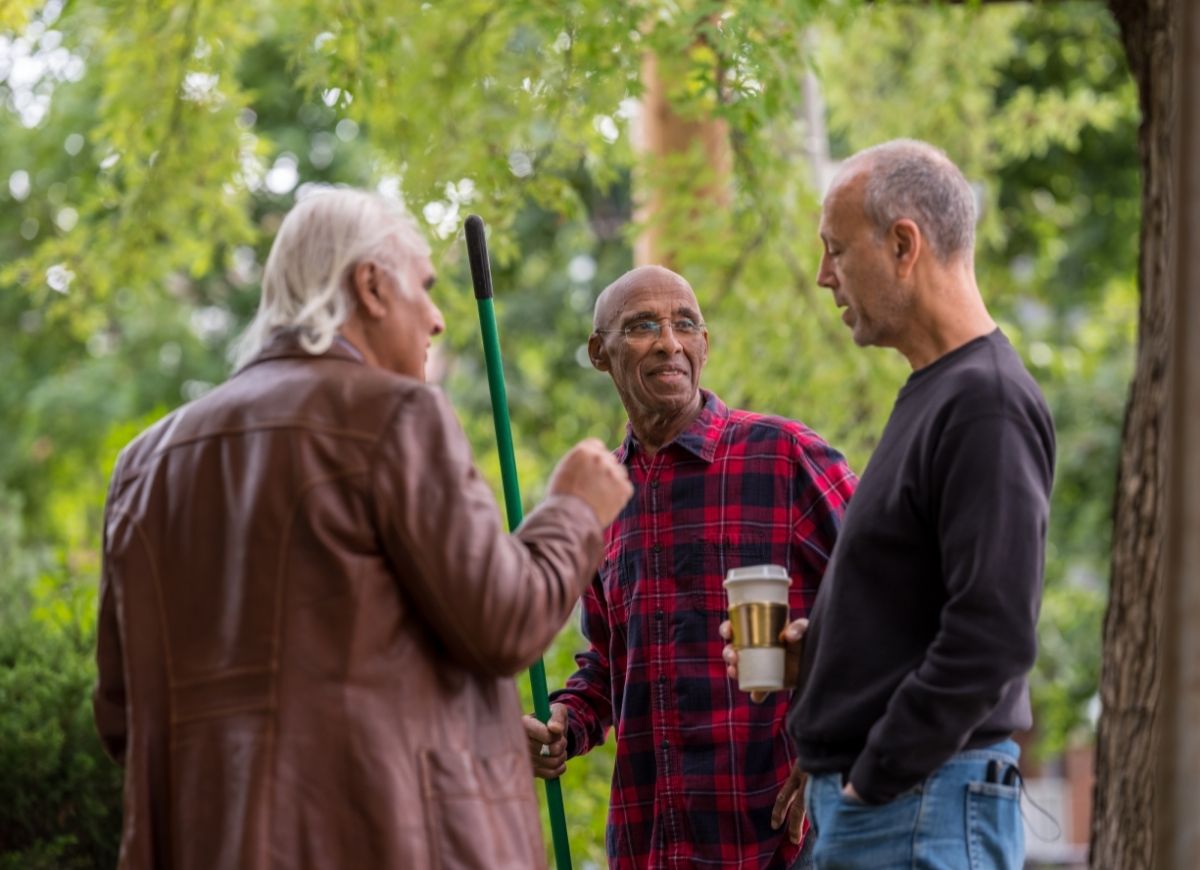We may earn revenue from the products available on this page and participate in affiliate programs. Learn More ›
When clearing away items that no longer serve your household, some may still have plenty of value for someone else. Giving away stuff for free online is always an option, and yard-sale hopping can be a fun and frugal weekend activity. However, good old-fashioned swap meets are becoming 2022’s answer to finding new homes for your decluttered items. Plus, a swap meet also can ease senses of community disconnection.
Swap meets are a time-tested means of exchanging goods, and they’re finding new fans in millennials, minimalists, and fans of HGTV’s Hot Mess House. Not only do swap meets align perfectly with today’s “reuse, recycle, renew” mindset, they can also be a fantastic way to meet neighbors and strengthen existing bonds with friends or acquaintances.
Instead of delivering bag after bag of charity donations, holding a yard sale, or discarding your cast-offs directly to a dump (thereby adding to the worsening landfill capacity crisis), why not help organize a swap meet? Keep reading to find out how to host a successful swap meet in your community.
Why Swap Instead of Sell?
Sure, you could arrange a multi-family yard sale, or use a neighborhood community center for a coordinated second-hand sales event. However, swapping items instead of sticking a price tag on them is about more than just scoring big financially.
Swapping offers the chance to declutter while keeping your discards out of the landfill, building community by helping one another, and having fun. Coming home with new-to-you items that will be useful or enjoyable is a bonus.
Plan for a Successful Swap

As with so many aspects of life, one of the keys to a successful swap meet is planning. The sooner you invite people after setting a date, the better. A Facebook or Nextdoor group dedicated to the event or an online invitation service makes it easier to communicate the meet’s details to a broad audience.
Those details should be prominently posted on the site, and the details sent directly to participants at least once. Here’s a quick checklist of swap meet information that participants will want to know:
- The date and time with a rain date
- Who can attend, and whether guests are allowed
- What is required for entry to keep things equitable
- Which items are and aren’t allowed
- How swapping will work
- Who will mediate potential disputes
- What will be done with leftover items
- Participants’ contact information
- A rundown of swapping etiquette and other rules you want to set
How to Arrange the Exchange
One of the most important things to consider is how swap meet attendees acquire items. They can literally swap items (“I’ll trade you this badminton set for that food processor”), use a faux currency or ticket system (swappers receive one ticket for each item they contribute, and each piece on offer is assigned a ticket value), or just pool all of the items together and let everyone have at it (and hope that there aren’t any squabbles).
How you handle the trading process has a lot to do with who’s invited and what kinds of items are on offer. Smaller groups of friends and coworkers can probably deal directly with each other; larger crowds or a meet with higher-value offerings might need a more structured system. Encourage friendly negotiation as well as lingering, so that folks are less tempted to quickly grab and go. Lastly, remind yourself and others that the benefits of the event extend beyond profit.
Who to Invite (and Who Not to Invite)

Think carefully about who you’ll ask to your swap meet. It could be restricted to invite-only or extended to let attendees bring guests. Opening your metaphorical doors to the public at large might not be ideal in every case.
Regardless of how loose or strict the rest of your guidelines are, one ground rule is usually non-negotiable: No one gets in without offering at least one thing to swap unless they’ve already contacted organizers and received dispensation (see “Don’t Have Any ‘Stuff’ to Swap?” below). Alternatively, ask all comers for a donation to a local charity, in lieu of an entry fee.
What to Swap
Anything you’d sell at a garage sale usually works for a swap meet. Just be sure that the items you bring are clean and in safe working order (no recalled car seats or worn-out items, please!). That old chestnut about “one person’s trash is another person’s treasure” is absolutely applicable here. We never know who might be thrilled to get something we think is worth nothing.
It’s up to you whether slightly faulty or damaged items are allowed: Can participants bring clothing with broken zippers, small appliances that are on the fritz, or other items that need a little TLC? If you do accept fixer-upper finds, emphasize to attendees that defects must be clearly marked and/or articulated to avoid any confusion or disappointment.
Don’t Have Any “Stuff” to Swap?
Guests who have gone full-minimalist—or, conversely, can’t bear to part with their possessions—don’t have to be excluded. Instead, ask them to contribute refreshments, lend folding tables, or help others haul their new belongings home with a hand truck or pickup truck, or even provide entertainment (e.g., playing an instrument, getting a local band to perform, or setting up a speaker and Spotify playlist). People who show up with flowers or food from their gardens, plant cuttings, or seeds to swap will be well received.
You might also consider allowing guests to barter intangibles, like time or skills, rather than material objects: The services of house-sitters, babysitters, people who plow snow and mow grass, and handy folks who do home repairs are sure to be in demand, as are the talents of amateur bakers, cooks, or crafters. We all know someone who would swap some nearly-new sweaters or kitchen gear for these services, or to have errands run for them.
Post-Swap Cleanup

Unless you genuinely enjoy cleaning up after others, ask for volunteers to help tackle this last task—and ask well in advance, not at the event. Being on the cleanup crew can also be a way for attendees with little to no swappable stuff to contribute their fair share.
Deciding how you’ll deal with leftover items is something else that you should do early in the swap’s planning process. The easiest solution is to donate the discards, and researching local charities that will pick up the leftovers is probably the easiest way to do so. Another option is to offer those who are still standing around chatting while the shindig is winding down, or those working cleanup, any items that are left over.
Ready, Set, Swap!
It’s rewarding to give no-longer-needed items a good home and a new lease on life. It’s doubly rewarding if you can snag something that you’ve wanted without having to buy it new. Whether you’re getting together with old friends for a reunion or getting to know your neighbors, swap meets are an enjoyable way to help each other out and—of course—score cool stuff.

